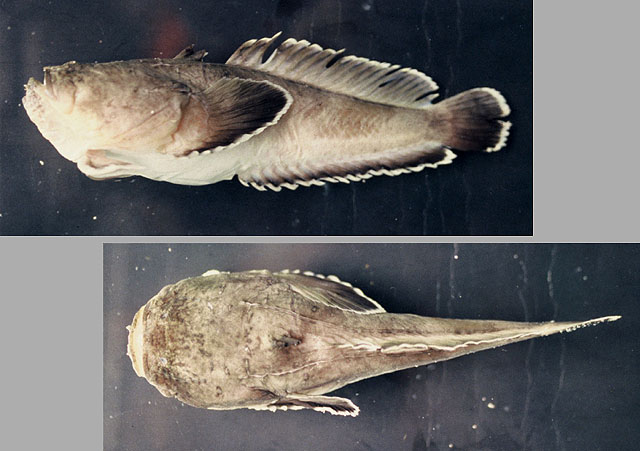| Batrachoididae (Toadfishes), subfamily: Thalassophryninae |
| 21.3 cm TL (male/unsexed); max.weight: 230.8 g |
|
demersal; brackish; marine; depth range - 60 m |
| Western Atlantic: Tobago to São Paulo, Brazil (Ref. 57756). |
|
Dorsal spines (total): 2-2; Dorsal soft rays (total): 20-29; Anal spines: 0-0; Anal soft rays: 19-19. All fin membranes brownish proximally, blackish from medial to distally, white extremely; body dark brown; diffuse black saddle-shaped blotches on body, 1 on orbital region and dorsal spine area, 3 on soft dorsal; no black spot except for base of dorsal and opercular spines (Ref. 13608). |
| Numerous in the estuarine areas of the Brazilian coast; stays motionless in the sandy or muddy bottoms; the venom is injected in the flesh of the victim when pressure is applied on the gland (Ref. 55461). |
|
Least Concern (LC); Date assessed: 21 August 2012 Ref. (130435)
|
| venomous |
|
Ranges from Paraíba south to São Paulo, including Manuel Luiz Reefs, Abrolhos Reefs and Trindade Island (Ref. 57756). A great number of injuries is caused by this species in fishermen in the north and northeast regions of Brazil. Report of such cases goes back as far as 70 years ago (Ref. 55461). Also Ref. 13608. |
Source and more info: www.fishbase.org. For personal, classroom, and other internal use only. Not for publication.

